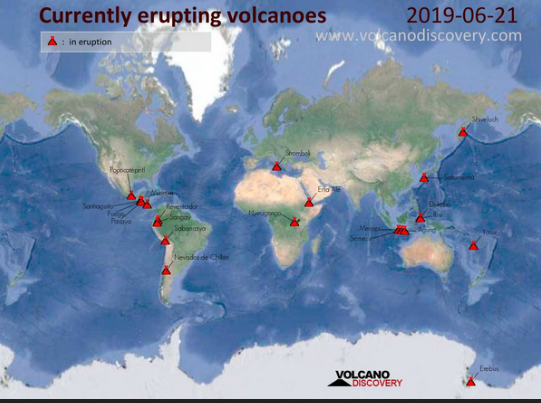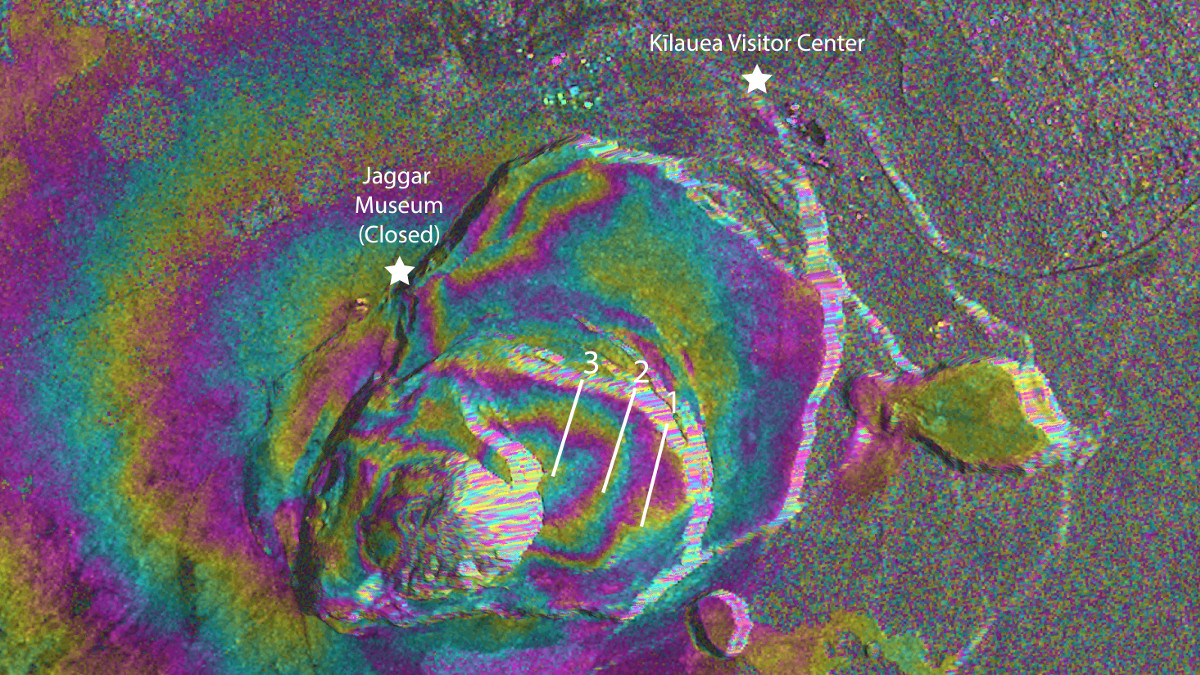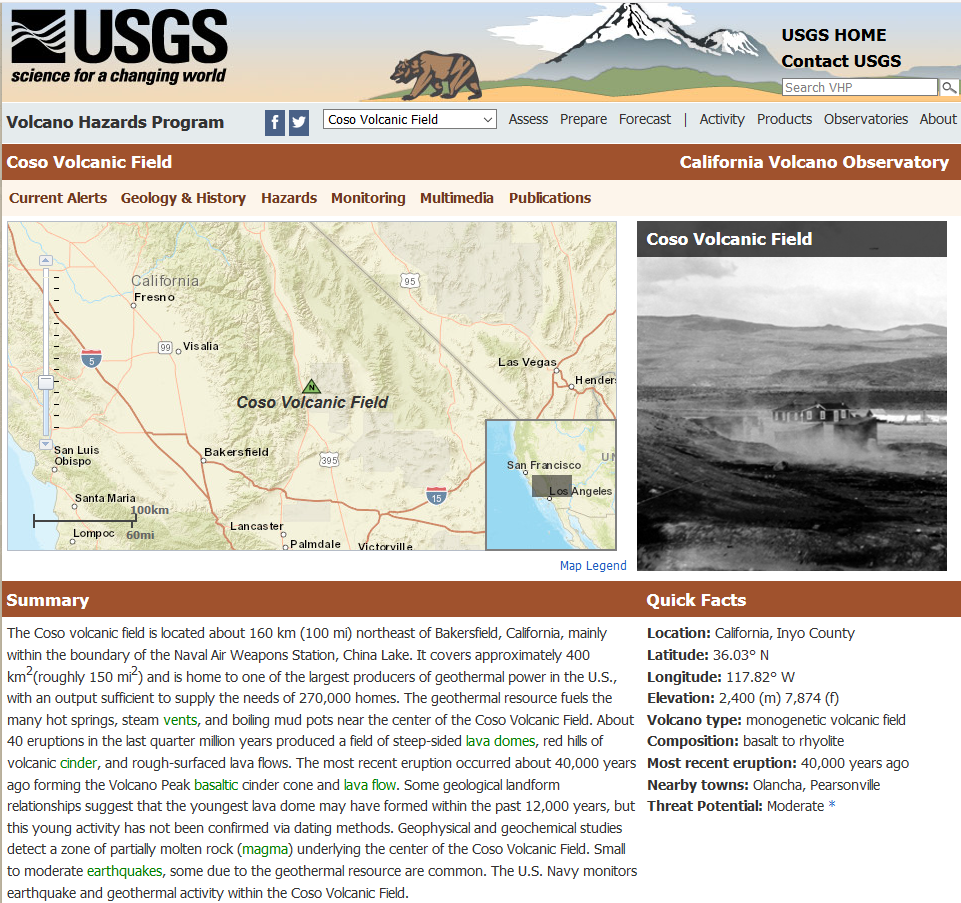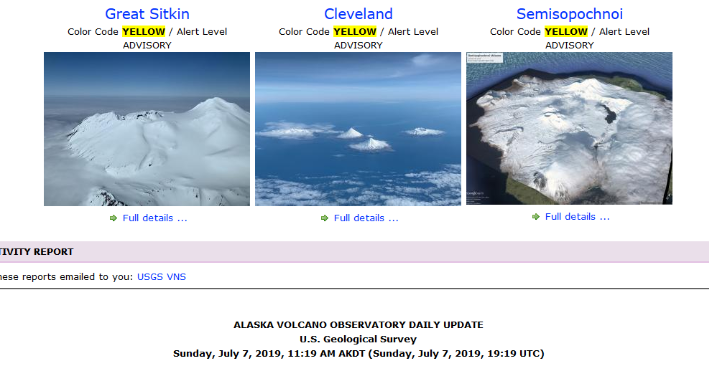A high-level eruption took place at Manam volcano, Papua New Guinea on June 27, 2019, after a period of increased seismic activity. The Aviation Color Code is Red.
According to locals, the
eruption started with a 'thundering noise' around 15:00 UTC (01:00 local time, June 28). Satellite imagery acquired 22:00 UTC, June 27 indicated volcanic ash rising up to 12 km (40 000 feet) above sea level, drifting W.
By 23:35 UTC, ash cloud was rising up to 15 km (50 000 feet) a.s.l. It detached from the volcano by 07:00 UTC, June 28 and continued moving SW.
"Traces of ash to 4.5 km (15 000 feet) a.s.l. are still discernable on multispectral satellite imagery, however,
the signal is largely SO2 rich," the Darwin VAAC said 07:00 UTC.
"Volcanic ash to
15.2 km (50 000 feet) is expected to dissipate within 12 hours. Rabaul Volcano Observatory reports ongoing eruption to 4.5 km (15 000 feet) is further aided by superheated
pyroclastic flow to the west and northeast of the crater."
A high-level eruption took place at Manam volcano, Papua New Guinea on June 27, 2019, after a period of increased seismic activity. The Aviation Color Code is Red.
According to locals, the eruption started with a 'thundering noise' around 15:00 UTC (01:00 local time, June 28). Satellite imagery acquired 22:00 UTC, June 27 indicated volcanic ash rising up to 12 km (40 000 feet) above sea level, drifting W.
By 23:35 UTC, ash cloud was rising up to 15 km (50 000 feet) a.s.l. It detached from the volcano by 07:00 UTC, June 28 and continued moving SW.
"Traces of ash to 4.5 km (15 000 feet) a.s.l. are still discernable on multispectral satellite imagery, however, the signal is largely SO2 rich," the Darwin VAAC said 07:00 UTC.
"Volcanic ash to 15.2 km (50 000 feet) is expected to dissipate within 12 hours. Rabaul Volcano Observatory reports ongoing eruption to 4.5 km (15 000 feet) is further aided by superheated pyroclastic flow to the west and northeast of the crater."
Manam's eruption comes
just 2 days after a powerful eruption at Ulawun volcano, about 714 km (440 miles) to the east.
Ulawun erupted at about 22:00 UTC on June 25 after a few weeks of increased activity. Volcanic ash rose up to 19.2 km (63 000 feet) a.s.l. The eruption forced thousands of people to evacuate.
Previous eruptive activity at the volcano
Explosive activity at Manam volcano, Aviation Color Code remains Red, Papua New Guinea -
March 04, 2019
Destructive eruption at Manam volcano, residents call urgent evacuation, VA to 16.7 km (55 000 feet) a.s.l., P.N.G. -
January 24, 2019
High-impact eruption at Manam volcano, ash to 15.2 km (50 000 feet) a.s.l., Papua New Guinea -
January 23, 2019
High-level eruption at Manam volcano, ash to 15.2 km (50 000 feet) a.s.l., P.N.G. -
January 11, 2019
Powerful eruption at Manam volcano, ash to 16.7 km (55 000 feet) a.s.l., P.N.G. -
January 08, 2019
High-impact eruption at Manam volcano, heavy ashfall blocking sunlight, P.N.G. -
December 08, 2018
Eruption at Manam volcano ejects ash to 10.4 km (34 000 feet) a.s.l., Aviation Color Code raised to Red, P.N.G. -
October 05, 2018
...
Two summit craters are present; both are active, although most historical eruptions have originated from the southern crater, concentrating eruptive products during much of the past century into the SE valley.
Frequent historical eruptions, typically of mild-to-moderate scale, have been recorded since 1616. Occasional larger eruptions have produced pyroclastic flows and lava flows that reached flat-lying coastal areas and entered the sea, sometimes impacting populated areas. (GVP)
 de alert is located at #AmarilloFase2. Do not approach the volcano. --using deepl.com
de alert is located at #AmarilloFase2. Do not approach the volcano. --using deepl.com de alert is located at #AmarilloFase2. Do not approach the volcano. --using deepl.com
de alert is located at #AmarilloFase2. Do not approach the volcano. --using deepl.com











